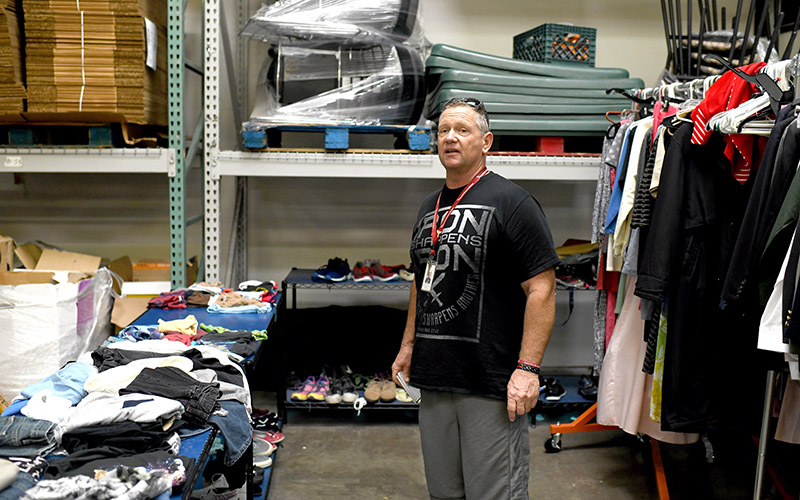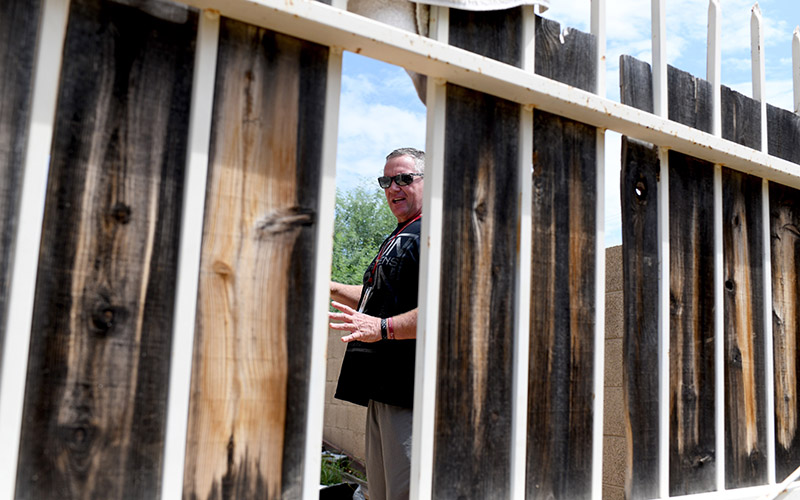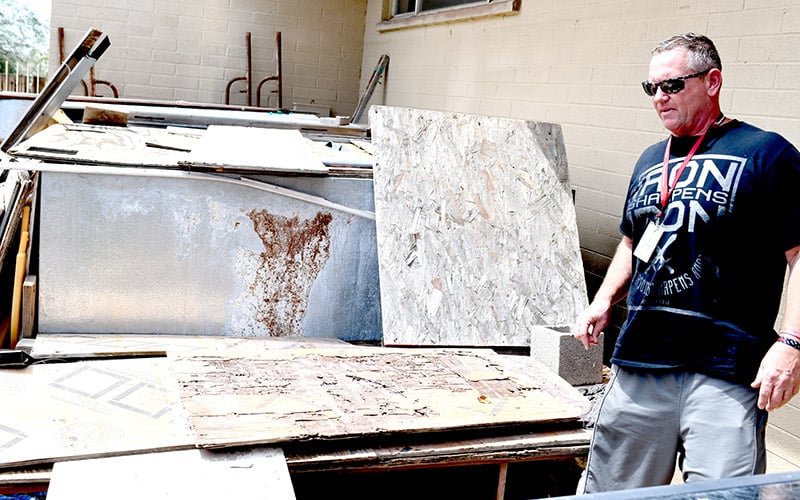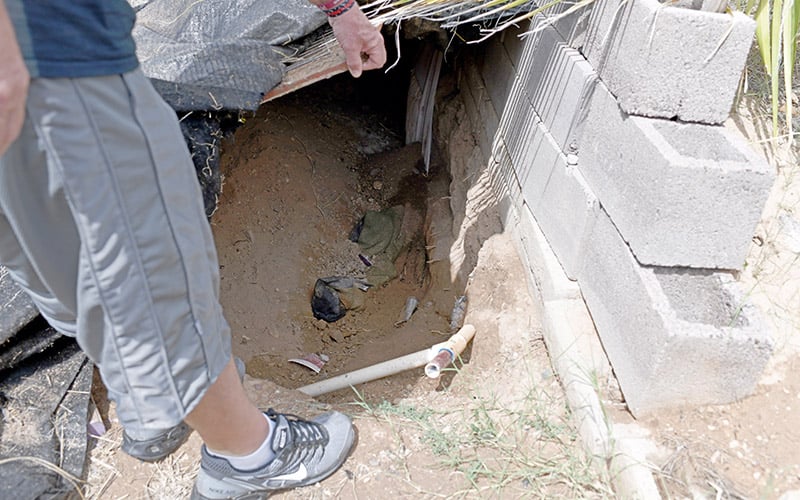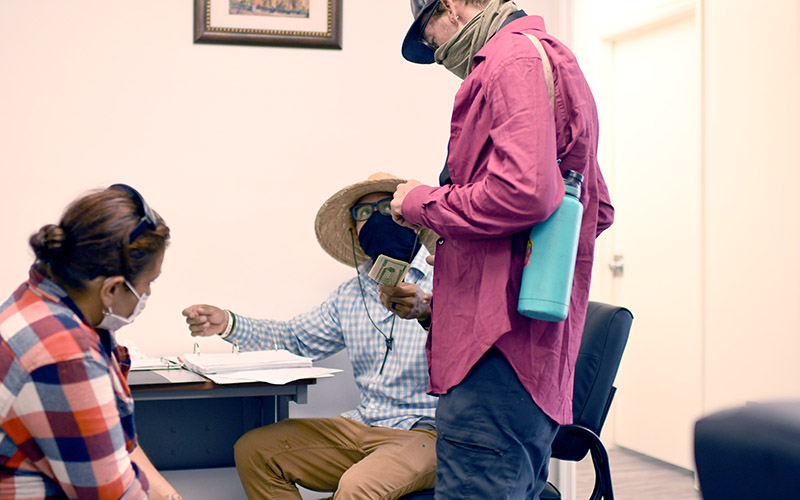
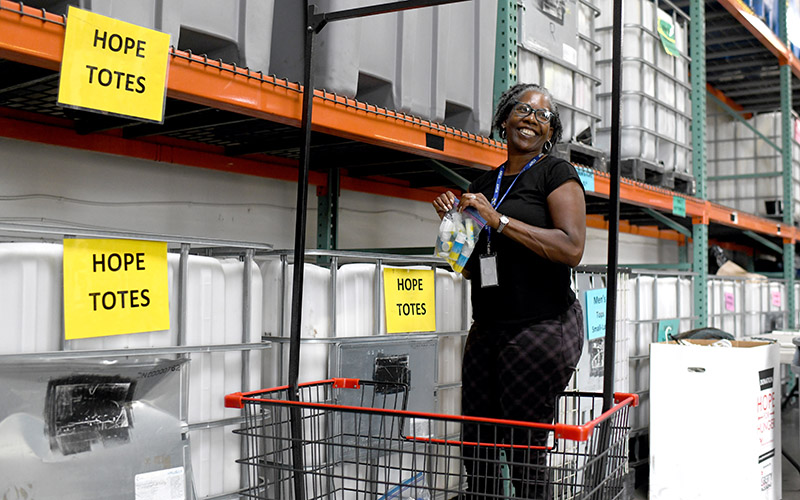
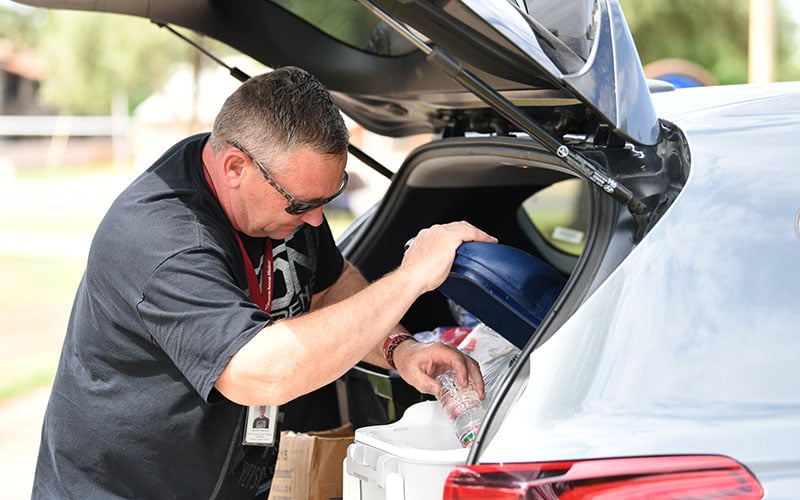
Left: Phoenix Rescue Mission workers set aside time for morning devotion before the Hope Coach team hits the road to connect with individuals experiencing homelessness. Center: Yvette Syverson experienced homelessness before going to work as a Hope Coach case manager. The program uses donated items to put together “Hope Totes,” bags filled with hygiene products, clothing and water. Right: Steve Harmon served four prison terms on drug-related offenses and often found himself homeless when he wasn’t behind bars. He started working as a Hope Coach case manager in 2020. (Photos by Kevin Hurley/Cronkite News)

